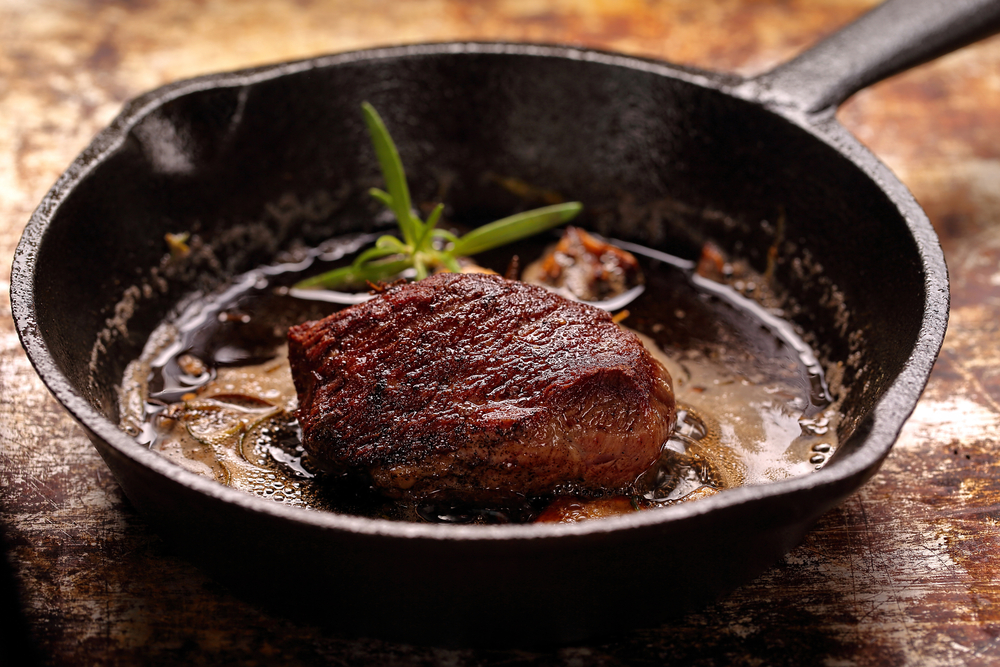Cast iron cookware has earned its place in kitchens worldwide because of its durability, high heat retention, and natural non-stick surface. With proper seasoning and care, a cast iron skillet can last for generations. It is excellent for searing meats, baking cornbread, and crisping up vegetables. However, this metal is not perfect for every type of food. Because of its porous surface and reactive nature, cooking certain ingredients can damage the skillet’s seasoning, affect the taste of the food, or even introduce health concerns through rust. Understanding what not to cook in your cast iron pan is essential if you want to extend its life and maintain its performance.
Acidic Foods Like Tomatoes and Vinegar-Based Sauces
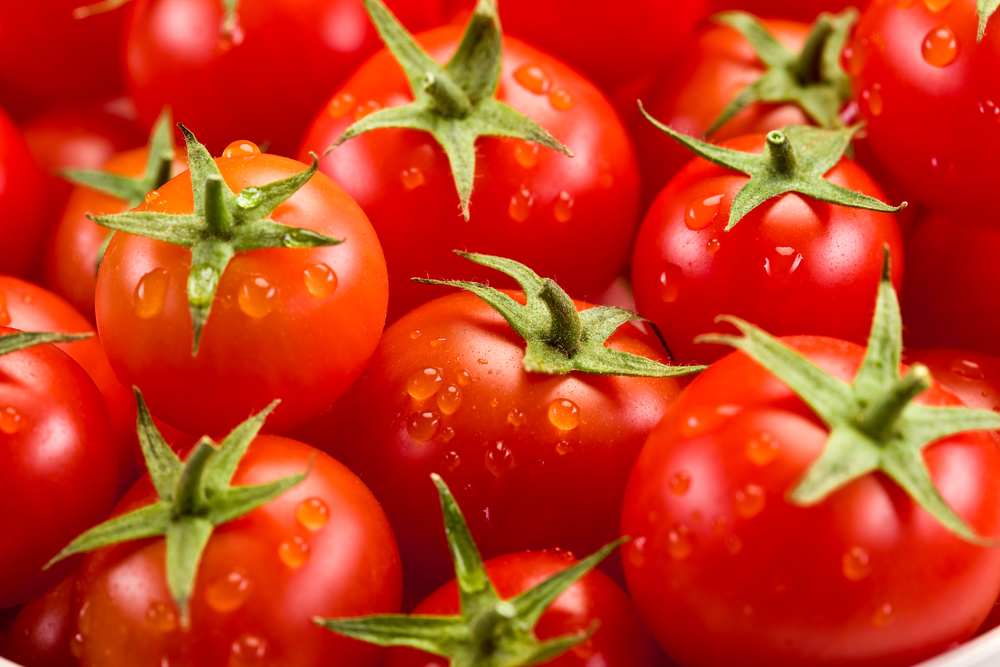
Acidic ingredients such as tomatoes, lemon juice, wine, and vinegar can strip away the polymerized oil layer that forms the skillet’s seasoning. This layer is what prevents rust and gives cast iron its semi-nonstick quality. Cooking acidic dishes like tomato sauces or chili for long periods can dissolve iron into the food. That process causes metallic flavors and potential discoloration of sauces. Iron leaching in small amounts is not dangerous and can even contribute to dietary iron, but it becomes a problem when the skillet’s seasoning is compromised. Extended exposure to acid causes pitting and flaking, which weakens the pan. It is best to cook acidic dishes in stainless steel or enameled cast iron instead.
Sticky or Delicate Fish
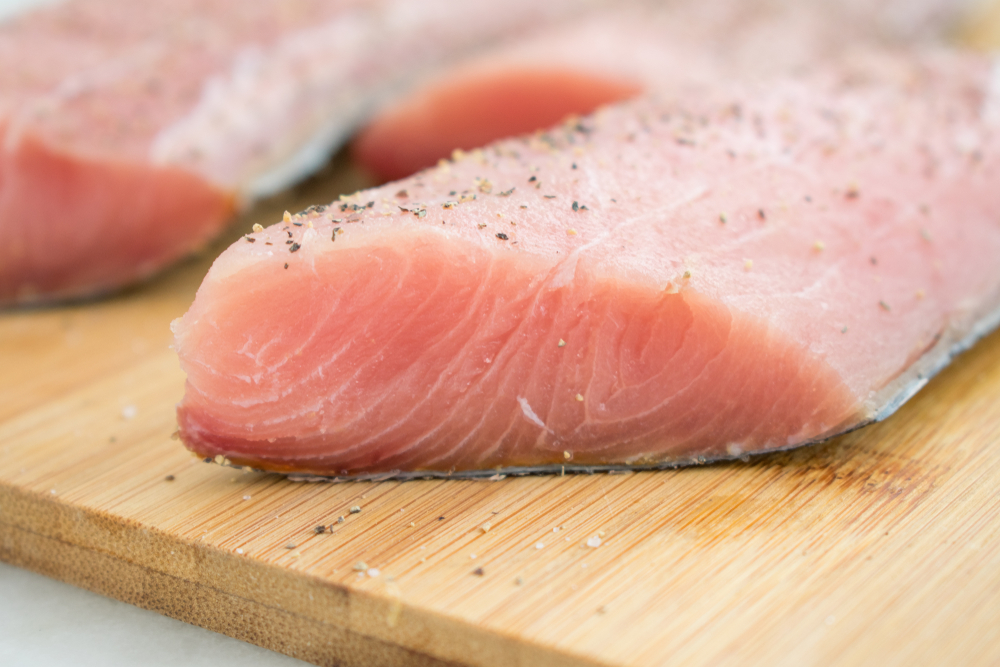
Cast iron is ideal for foods that can handle or benefit from a good sear. Thin white fish like tilapia or flounder are not among them. Their delicate texture causes them to fall apart easily, especially when flipped. Even well-seasoned cast iron can’t grip these types of fish, leaving behind sticky remnants and tearing fillets into pieces. Cleaning the stuck bits often leads to scrubbing, which risks damaging the skillet’s seasoning. Additionally, fish flavors can linger in the pan’s porous surface and affect future meals. Instead, use a non-stick or stainless-steel pan for delicate fish, especially if you want clean edges and an intact presentation.
Eggs if Your Seasoning Is Not Perfect
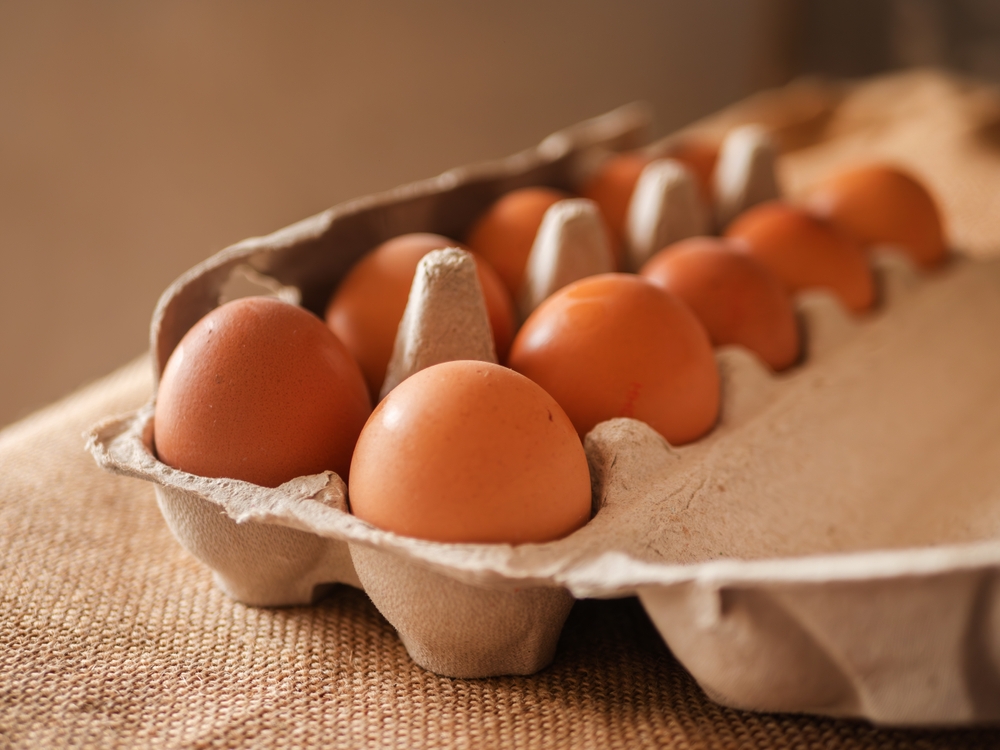
Eggs test the quality of your skillet’s seasoning better than almost any food. If your pan is flawlessly seasoned with many thin layers of polymerized oil, scrambled or fried eggs will slide off. But if your skillet is new, not frequently oiled, or cleaned too harshly, eggs will stick. That leads to uneven cooking, messy results, and difficult cleanup. Repeated failures can cause people to scrape or wash the skillet aggressively, which further degrades the non-stick surface. Eggs are best cooked in non-stick pans, carbon steel skillets, or even ceramic-coated options if your cast iron is not fully seasoned. If you do want to cook eggs in cast iron, make sure the pan is hot and generously oiled before adding them.
Read More: Effortless Dishes to Make When You Don’t Want to Cook
Desserts with Strong Flavors
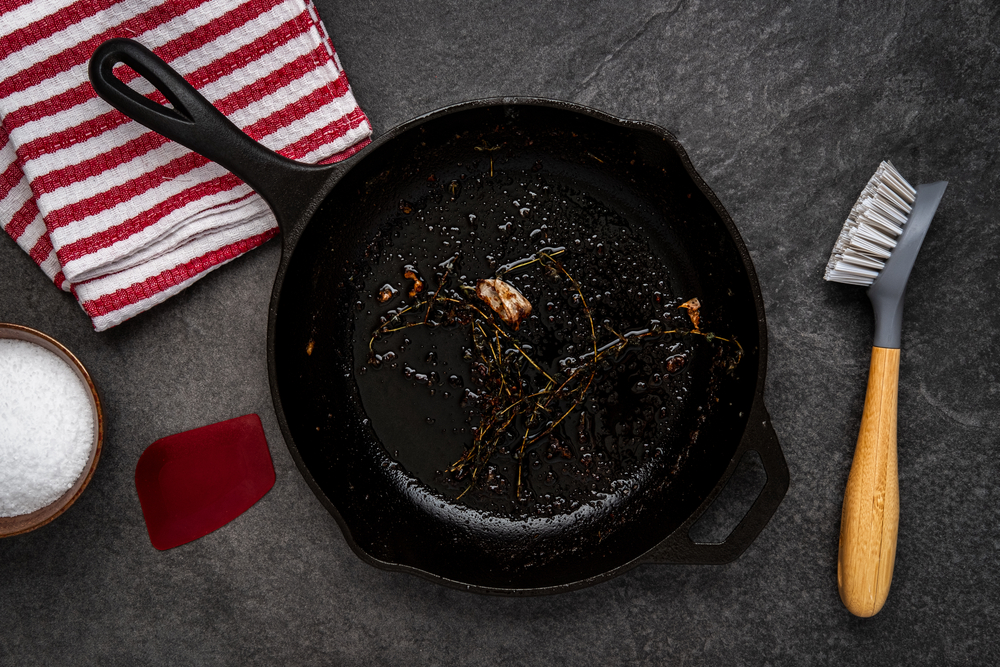
Cast iron retains aromas and oils from previous meals, which is why baking sweet dishes in a skillet previously used for garlic-heavy stir fries is a risky move. Even trace amounts of onion, cumin, or meat drippings can alter the taste of baked goods. The porous structure of cast iron absorbs flavors easily, and washing it with soap is not recommended because it strips seasoning. This makes it hard to switch from savory to sweet cooking in the same skillet. To avoid unwanted flavor transfer, it is best to dedicate one cast iron pan to sweet baking only. Alternatively, glass, ceramic, or enameled bakeware offers neutral surfaces for cakes, cobblers, and cookies.
Dishes That Require Boiling Water or Long Simmering
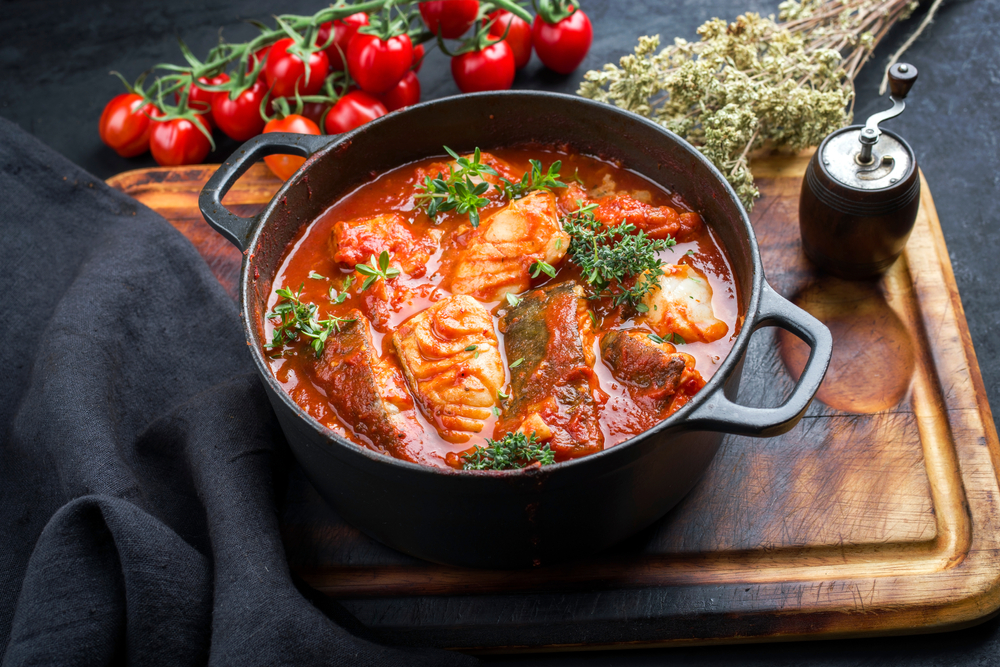
Simmering foods for extended periods, especially water-based dishes like soups or stews, can degrade the seasoning layer in cast iron. While a short simmer will not hurt, boiling water in the pan for hours softens the oil coating and leaves the metal exposed. Once that happens, moisture can cause rust if the pan is not dried and re-oiled immediately. Rusting occurs when iron reacts with oxygen and water, forming iron oxide, which appears as reddish-brown flakes. Ingesting small amounts is not harmful, but rust can ruin the surface and flavor of your meals. For boiling and simmering, stick to stainless steel pots or enameled cast iron, both of which are designed to handle high-liquid cooking without risk.
Why Proper Care Matters for Cast Iron Longevity
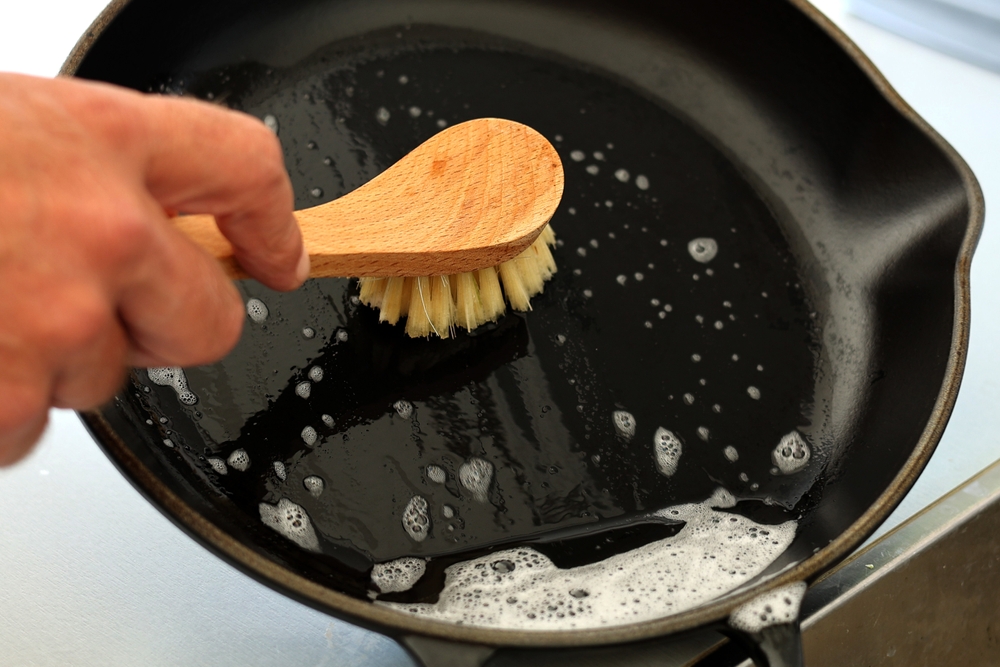
The more you use and care for your cast iron skillet properly, the stronger its seasoning becomes. That seasoning forms from layers of fat and oil baked into the surface, creating a hard, plastic-like coating. Cooking the wrong foods can damage that layer, requiring frequent re-seasoning. If the surface is compromised repeatedly, the pan will lose its non-stick quality and become prone to rust. Proper care involves avoiding reactive foods, not soaking the pan in water, drying it immediately after cleaning, and applying a thin layer of oil after each use. These habits keep the skillet in peak condition and extend its usable life by years.
Better Cookware Alternatives for These Ingredients
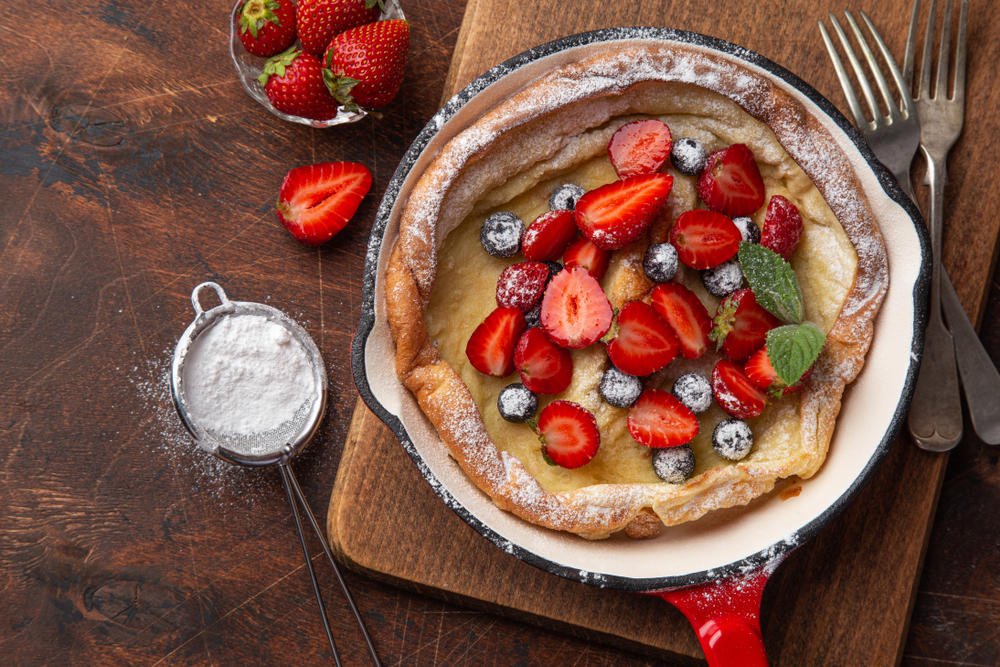
If you enjoy tomato-based dishes or vinegar-heavy sauces, a stainless steel sauté pan is your best option. Stainless does not react with acid, and it is easy to clean without worrying about seasoning. For eggs and flaky fish, use non-stick cookware, which guarantees minimal sticking and perfect results with little oil. When baking sweets, ceramic or glass dishes are ideal because they do not retain savory flavors. For soups or recipes that simmer for hours, enameled cast iron and stainless stockpots are the safest choices. Each of these options is engineered to handle specific cooking needs without damaging your tools or affecting food flavor.
Read More: 7 Foods You Should Avoid Cooking in Your Air Fryer
Know What to Avoid for Better Cooking Results

Even though cast iron is known for being durable, it has limitations. Cooking acidic foods, sticky fish, eggs without proper seasoning, strong-flavored desserts, and water-heavy dishes in cast iron can all lead to problems. These foods can damage the seasoning, create unwanted flavors, or cause rust. Using the right pan for the right task is part of being an informed cook. With just a little care and awareness, your cast iron skillet can remain a go-to tool in your kitchen for decades. Respect its strengths, avoid its weaknesses, and your cooking results will only improve.
Disclaimer: This article was created with AI assistance and edited by a human for accuracy and clarity.
